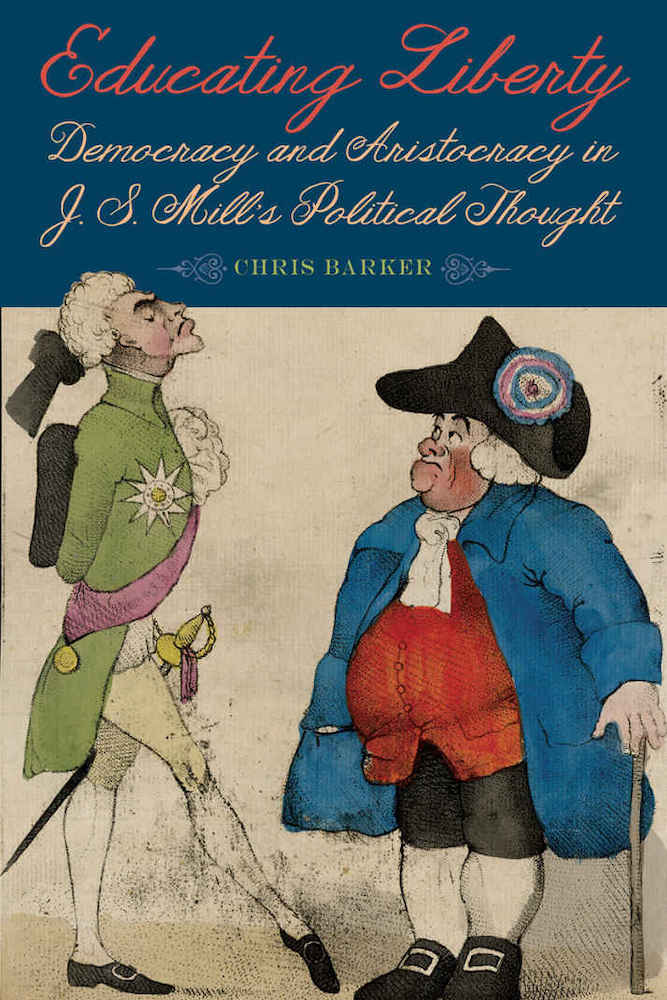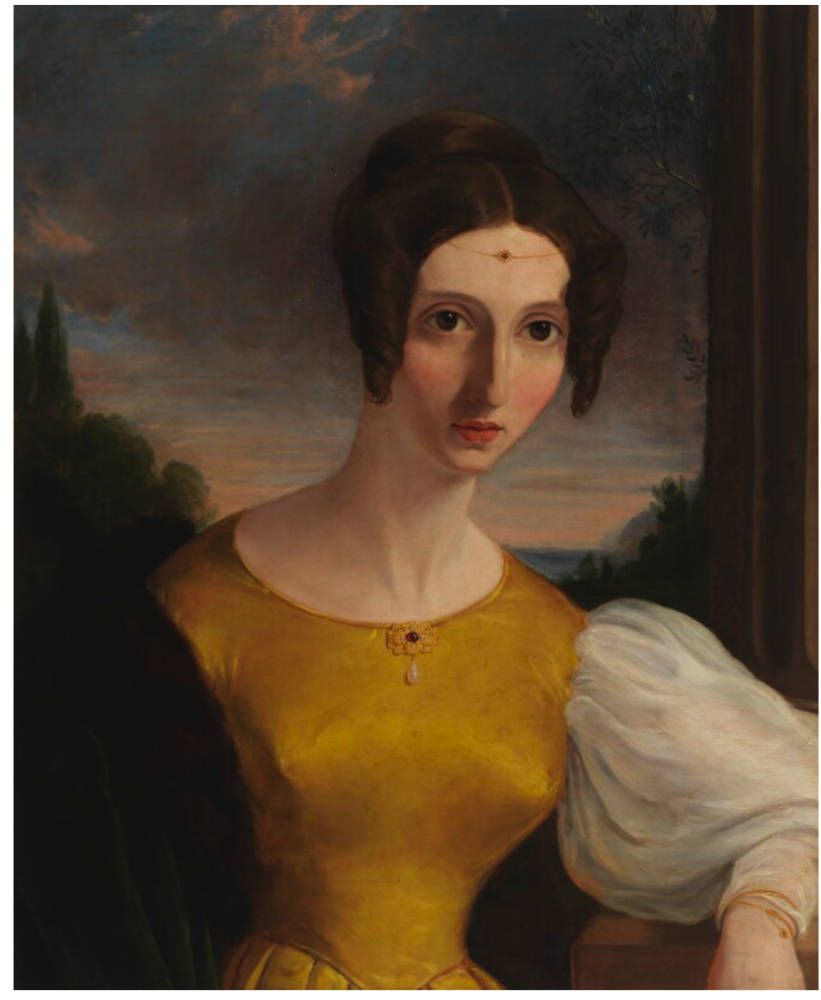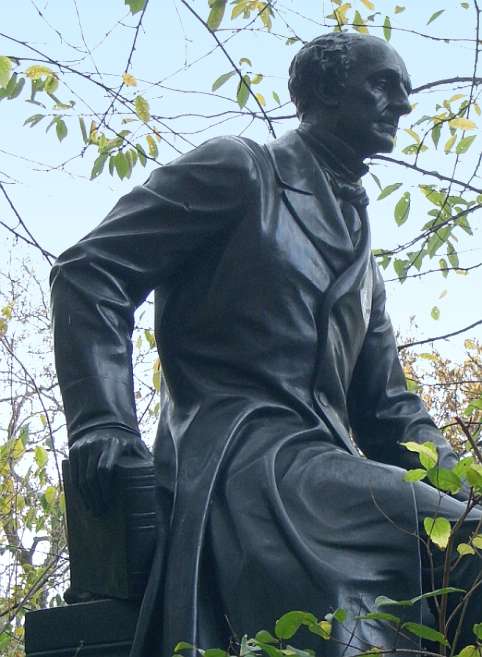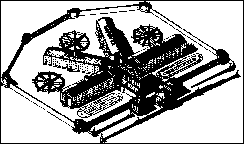This review is reproduced here by kind permission of Professor Brunon-Ernst and the online inter-disciplinary journal Cercles, where the review was first published. The original text has been reformatted and illustrated for the Victorian Web by Jacqueline Banerjee.

Since the 1990s, there has been a revival of interest in citizenship education as a means to revitalize democratic participation with the works of Gert Biesta (Learning Democracy in School and Society: Education, Lifelong Learning, and the Politics of Citizenship (Rotterdam: Sense Publishers, 2011). Amy Gutmann in Liberal Equality (Cambridge: Cambridge University Press, 1980) acknowledges Mill as a precursor of the idea that human development is fostered through political participation (55). Educating Liberty belongs to this trend and participates in the conversation about the competing claims of democracy and intellectual independence. A number of scholars have written books on John Stuart Mill. In contrast, Chris Barker’s chooses to focus on civic education. Indeed, he believes that Mill’s theory of education offers a new way of understanding the “puzzles of the two Mills” (4). Chris Barker describes Mill as first and foremost an “educational reformer and experimental utopian” (66). To form this opinion, he accepts Mill’s definition of education as anything that informs character whether “by laws, by forms of government, by the industrial arts, or by modes of social life” (5). He follows this line of reasoning when he divides his argument into five chapters, each turning the spotlight on one of the institutions of Victorian society: marriage, political economy, science, representative democracy and religion.

Harriet Taylor c. 1834, by an unknown artist (© National Portrait Gallery, London).
Chapter 1 explores Mill’s thought on marriage. It takes an interest in the issue at two levels: first from a legal point of view, looking at coverture; and second as an instrument of identity formation. It delves into the influence that Harriet Taylor had on the development of Mill’s call for change in the patriarchal Victorian marriage institution. According to Mill, the key element to advance a happy society is the marital friendship. While Barker recognizes that there are more ways of being in a relationship than companionate marriage, the concept of “marital friendship” has its use to emphasize the essential need for cooperation in the private and the public sphere.
Chapter 2 investigates the troubled relationship between workers and owners / managers. According to Barker, Mill’s aim is “to do away with the separation of society into two distinct ... classes and to curb the dependence of the working class on owners and managers” (55). After describing the competing theories at the time, be it socialism, communism, classical liberalism or radicalism – and how Mill’s political economy is to be distinguished from them – Barker explains Mill’s preference for competition and cooperative organization, without the help of the state, as they also contribute to fostering the conditions of mental independence.
Chapter 3 deals with the role of science in a democracy. In a fruitful discussion with the French positivist Auguste Comte, Mill tries to address the issue of making social science compatible with representative democracy and civic education. The chapter reassesses the interpretation of Mill as a “defender of expertocracy” and as “someone hopeful that the influences of the few can correct for problems necessarily generated in a regime of the many” (108). The focus here again is on cooperation in the field of the production of knowledge.

Seated statue of Mill on the Embankment, London, by Thomas Woolner.
Chapter 4 examines Mill’s theory of political representation. Mill’s endeavor is set in the context of the fear of majoritarianism. Mill’s input in the debate is to develop “a conservative theory of representative democracy that relies on the competent and enlightened few to preserve the ‘fixed point’ of a liberal constitution, while ensuring that the many do not become passive and disenfranchised” (122). In order to make his point, Barker discusses examples of civic participation to show how Mill suggested setting filters to thwart the problem of individuals’ self-corruption.
Chapter 5 examines Mill’s religion of humanity, that is a human-centered and rationalistic religion which is based on the belief of the good of humanity. Here again, the parallels with Comte’s writing and personal life are rife. Mill’s work on religion has attracted little positive notice. Assessing this corpus from the perspective of civic education is audacious and makes for an engaging read. Barker follows the line of argument in Mill’s Three Essays, to conclude: "Mill acknowledges the problem of liberal individualism and atomism. He clearly indicates that his answer is to teach the equal but meritocratic social duties of Utilitarianism as the content of a civic religion, combined with On Liberty’s doctrine of individualization in how views and opinions are held, and not to place religious beliefs in an uncriticizable and irrelevant private sphere" (162).
Educating Liberty is replete with references to thinkers who contributed to informing Mill’s theories, from his early influences (Hobbes, Locke, Adam Smith and Bentham) to his wife Harriet Taylor and other Victorians such as Comte, Tocqueville, Macaulay, Kant, Hegel, Carlile, Humboldt, Saint Simon, Owen, Fourier, Carlyle, etc. While Barker extensively discusses Comte’s influence, some utilitarian roots of Mill’s theory are caricatured. Indeed, some secondary sources quoted need to be updated and the scientific edition of the Collected Works of Bentham is not used. Moreover, repeated references to the Panopticon give the impression that Bentham’s utilitarianism boils down to that episode.

Aerial view of Pentonville prison: an example of Bentham's "panopticon"
One of the disadvantages of the book is that it gives too little attention to the question of Mill’s ideas on India. An in-depth discussion of his stance might have challenged the tenets of civic education as understood by Mill in a Western and colonialist context. It is an area of growing scholarship which would have been of interest to address. Similarly, slavery is mentioned only in passing. The book attempts to embrace Mill’s complete works. Because the task is unachievable within the scope of a volume, it would be unfair to hold against Baker the frustration the reader may feel that some areas could have been covered more thoroughly.
All in all, Educating Liberty skillfully outlines the importance of civic education in Mill’s considerable production, and offers a well-informed reading of Mill’s iconic and lesser-known writings. The significance of the book lies in describing Mill’s civic education as a life-long endeavor, which begins in the home and is promoted by small-group associations. These associations prepare individuals to be free and equal rather than passive and subordinate. Barker analyzes how the development of civic education relies on confronting existing social hierarchies and creating new hierarchies of expertise, and in tracing these transformations, Barker makes the reading of the book enjoyable and interesting for the reader.
Bibliography
Barker, Chris. Educating Liberty: Democracy and Aristocracy in J.S. Mill's Political Thought. Rochester, NY: University of Rochester Press / Woodbridge: Boydell & Brewer, 2018. Hardcover. viii+267 p. ISBN 978-1580469227. $105 / £80.
Created 5 October 2020